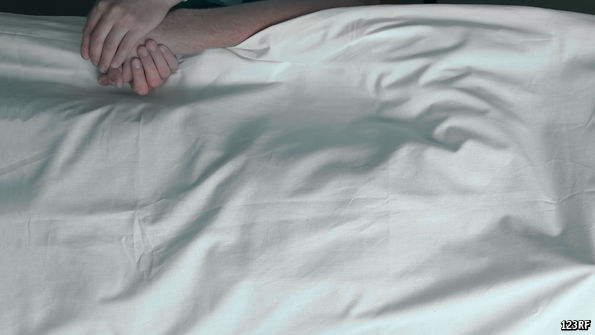
CALIFORNIA, America’s most populous state, became the fifth to sanction doctor-assisted suicide on June 9th. According to the End of Life Option Act, adult Californians of sound mind who have a terminal illness and less than six months to live are eligible to receive a prescription for a drug to bring about their deaths. The lethal dose is not quite as easy to procure as a course of antibiotics: the law requires patients to make a written request (verified by two witnesses and approved by two doctors) and to orally request the drugs twice, spaced out by at least 15 days. Doctors confer with the patients (reminding them not to take the drug while in public) and write the prescriptions; individuals wishing to hasten their deaths are obliged to ingest the drugs themselves. This means that patients who are unable to self-administer the medication are not eligible to receive a lethal dose of an “aid-in-dying” drug, whether or not they tell loved ones of their desire to end their lives before they become incapacitated.
In implementing this law, California largely cribbed from similar legislation in Oregon, Vermont and Washington. (The practice is also permitted in Montana due to a court ruling in 2009.) With the End of Life Options Act, the number of Americans potentially eligible to secure an early death rises to about 50m, or roughly one-sixth of the total population. But the option will likely remain the choice of few people facing the end of their lives. The law in Oregon, which pioneered doctor-assisted dying, has not spurred a rash of suicides: over nearly two decades with the Death With Dignity Act, only 991 patients have used the programme to end their lives. Another 600 or so who obtained the medication did not end up taking it.
Three-quarters of Californians support doctor-assisted dying; the law had a fairly smooth run through the state legislature, where it passed in September 2015 by votes of 44 to 35 and 23 to 15. Governor Jerry Brown, a former Jesuit seminary student, signed it the following month, noting that if he faced a prolonged and painful death, “it would be a comfort to be able to consider the options afforded by this bill”. Opponents of the measure include disability-rights, religious and pro-life organisations, several of which are backing a legal challenge to the California law in court. The president of National Right to Life, Carol Tobias, condemns the law for having “no real safeguards”. The End of Life Option Act, she says, “shows a blatant disregard for the lives of California’s medically vulnerable citizens and sends a message to these citizens that their lives are less worthy to be lived”. The “real goal” behind the doctor-assisted dying movement, Ms Tobias claims, “is euthanasia on demand for any reason”.
This charge may be overstated, but national polls show strong support for medical aid in dying. The widely publicised case of 29-year-old Brittany Maynard—a California woman with brain cancer who travelled to Oregon to avail herself of doctor-prescribed suicide in 2014—may have pushed support even higher. Slim majorities supported the right to die from 2010 to 2013, but in 2015 a Gallup poll showed that 68% of Americans think terminally ill patients should be able to turn to their doctors for life-ending medication. This year, legislatures in 19 states and the District of Columbia have recently considered right-to-die bills. The Medical Aid in Dying Act was introduced last month in the New York Assembly. New York’s governor, Andrew Cuomo, is non-committal: “It’s obviously complicated and controversial and it’s going to depend on how the bill is written and what the provisions are”, he said. John Flanagan, the Republican majority leader in the state senate, seems more resistant. “This is an area where we need to be extraordinarily careful and circumspect”, he said. “We’re literally talking about life and death.”
SOURCE: The Economist
No comments:
Post a Comment
Comment Here: